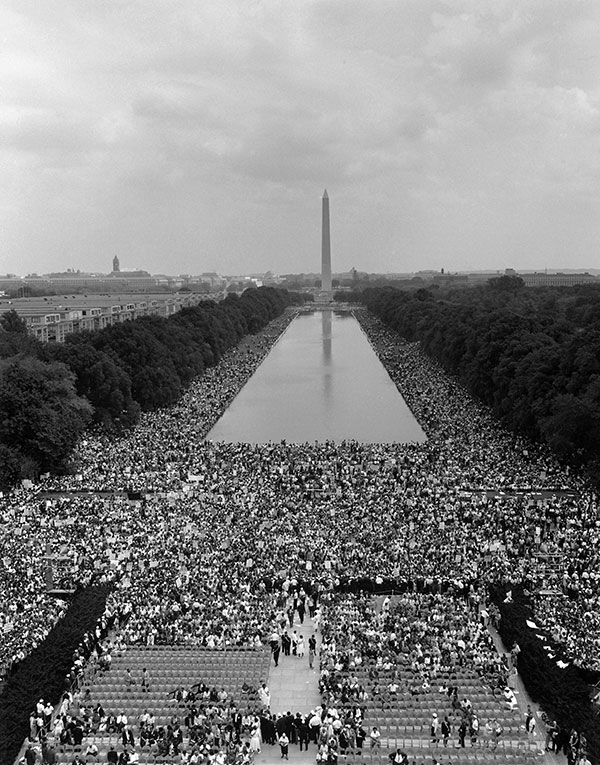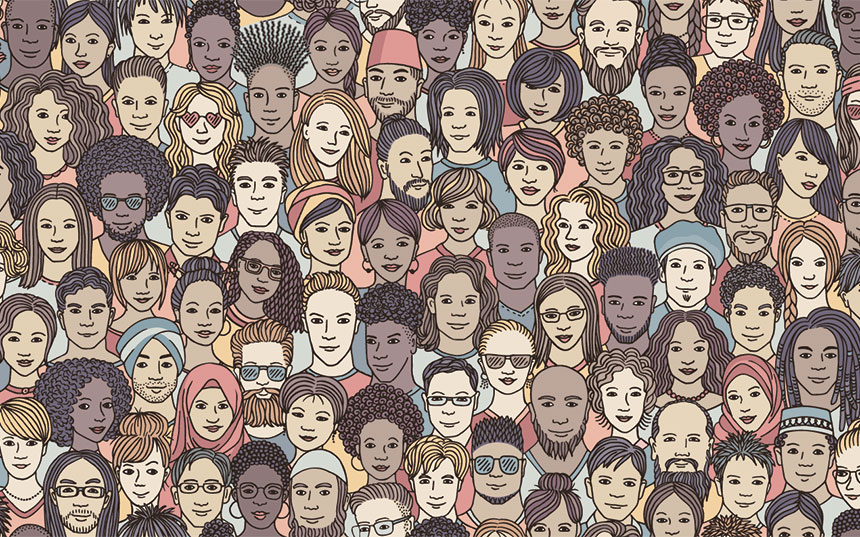When I was a boy spending the summer in Greece in July of 1974, the military dictators unexpectedly fell from power. A former prime minister, Konstantinos Karamanlis, returned from exile to Syntagma (Constitution) Square in central Athens. Enormous crowds gathered in all the avenues approaching the square, and my mother, Eleni, took me and my brother Dimitri out into the city that night. In the preceding hours, the junta had sent scores of trucks with armed men and megaphones into the streets. “People of Athens,” the soldiers blared, “this doesn’t concern you. Stay inside.”
My mother ignored the warnings. We got as close as a block from Syntagma Square, near the royal palace and the national zoo. She boosted us onto a huge stone wall topped with a wrought-iron fence that kept the animals on the other side from escaping. Dimitri and I stood with our backs pressed against the metal rails in the narrow bit of ledge that was available to us, and my mother stood below us wedged in among everyone else.
The crowd was packed body to sweaty body. The masses began chanting slogans revealing their pent‑up frustrations with years of dictatorial rule and foreign meddling: “Down with the torturers!” “Out with the Americans!”
Perhaps oddly for a man who has spent his adult life studying social phenomena, I have never liked crowds. As a child clinging to the fence, I remember feeling excited but mostly afraid. Even at age 12, I knew that I was witnessing something unusual — certainly an event unlike anything I had ever seen — and that scared me.
The crowd grew louder and angrier. I remember not understanding why, if they were supposed to be celebrating, the people were so agitated. I looked down at my mother with complex feelings of pride and alarm because she — my beautiful, gentle mother — was getting into the spirit of things too. She was proud to be Greek and, like many of her fellow citizens, was rejoicing at the restoration of democracy. I also knew that she was intensely devoted to our education and wanted us to participate in and learn from this historic event. She was the sort of parent who took us to civil rights marches and anti-war demonstrations back in the United States and wanted us to see the world.
But I also felt fear because I could see in my mother’s eyes that she was being swept away by a powerful force. I watched uneasily as she became more animated. I worried that she might forget us up on that stone ledge or that we might get separated as the crowds shifted.
Suddenly, as the anti-American epithets grew louder, she pointed up at me and my brother and shouted, “Ypárchoun oi Amerikanoí!” — “There are the Americans!”
What could possibly have possessed her to do this? To this day, I don’t know what my mother meant to accomplish by her outburst. She was a deeply sensible and loving caregiver who adopted children of diverse racial backgrounds in addition to having her own. Why would she draw reckless attention to her beloved sons’ outsider status in the midst of a volatile crowd? Did she believe that such a gesture might work to cool the ardor of an unthinking mob? I can’t ask her these questions because she died when I was 25 and she was 47, after a long illness and a life devoted to scientific and humanitarian causes.
My grandfather took me aside and explained that leaders could prey on people’s sense of community and their xenophobia simultaneously.
In the years since, I have come to understand some of the primal forces that might have motivated my mother, forces that ordinarily work for the good of our societies. Natural selection has equipped us with the capacity and desire to join groups, and to do so in particular ways. For instance, we can surrender our own individuality and feel so aligned with a collective that we do things that would seem against our personal interests or that would otherwise shock us.
Nonetheless, our ability to be charitable to members of our social groups provides us with something very profound: We can see ourselves as all being part of the same group, which means that, in the extreme, we can see that we are all human beings. We can efface the tribalism of small groups and find a kindness for large groups. Knowing my mother’s values and her commitment to the common humanity shared by all people, I choose to see her statement this way: She was pleading for forbearance. Clearly, not all Americans were bad people; some were just young boys, like her beloved children.
A few years later, when I was about 15, on a trip to Crete with my grandfather, I watched a vast crowd whipped into a nationalist frenzy. By then, I had seen movies of Hitler and Mussolini doing the same thing in the run‑up to World War II, and I could not believe what I was witnessing. We stood way in the back of the crowd, quite safe, but still, I could feel its power. My grandfather took me aside and explained that leaders could prey on people’s sense of community and their xenophobia simultaneously. He also taught me the word demagogue. I was tremendously roused by the whole experience and can still remember the disturbing feelings of injustice that the frenzied crowd evoked.
Despite this, it is also clear that crowds can be a force for good. Consider the famous organized civil rights marches in the United States, from the March on Washington in 1963 (where Martin Luther King Jr. delivered his famous “I Have a Dream” speech) to the march at Pettus Bridge in 1965 (where the Alabama police brutally beat African-American protesters demanding voting rights).
The coalescence of concerned and aggrieved individuals into larger groups reinforces their own beliefs, but it also demonstrates to outsiders a power not available to a similar number of isolated persons acting independently.

For good or ill, forming crowds comes so naturally to our species that it is even seen as a fundamental political right. It is codified in the First Amendment to the U.S. Constitution, which notes that “the right of the people peaceably to assemble, and to petition the Government for a redress of grievances” shall not be infringed by law. The inclination to assemble into groups and deliberately choose friends and associates is part of our species’ universal heritage.
As I write, the United States seems riven by polarities — right and left, urban and rural, religious and a-religious, insiders and outsiders, haves and have-nots. American citizens are engaged in vocal debates about their differences, about who can and should speak for whom, about the meaning and extent of personal identity, about the inexorable pull of tribal loyalties, and about whether the ideological commitment to the melting pot in the United States — and to a common identity as Americans — is feasible or even desirable.
Lines appear sharply drawn. It may therefore seem an odd time for me to advance the view that there is more that unites us than divides us and that society is basically good. Still, to me, these are timeless truths.
One of the most dispiriting questions I have encountered in my research is whether the affinity people have for their own groups — whether those groups are defined by some attribute (nationality, ethnicity, or religion) or by a social connection (friends or teammates) — must necessarily be coupled with wariness or rejection of others. Can you love your own group without hating everyone else?
The news is not all bad. Human nature contains much that is admirable, including the capacity for love, friendship, cooperation, and learning, all of which allows us to form good societies and fosters understanding among people everywhere.
I first began to think about this issue — of how humans are fundamentally similar — almost 25 years ago during my work as a hospice doctor. Death and grief unite us like nothing else. The universality of death and of our responses to it cannot help but impress human similarity upon any observer. I have held the hands of countless dying people from all sorts of backgrounds, and I do not think I have met a single person who didn’t share the exact same aspirations at the end of life: to make amends for mistakes, to be close to loved ones, to tell one’s story to someone who will listen, and to die free of pain. The desire for social connection and interpersonal understanding is so deep that it is with each of us until the end.
My vision of us as human beings holds that people are, and should be, united by our common humanity. And this commonality originates in our shared evolution. It is written in our genes. Precisely for this reason, I believe we can achieve a mutual understanding among ourselves.
In highlighting this, I want to be clear that I am not saying that there are no differences among social groups. It’s obvious that some groups struggle with social, economic, or ecological burdens that other groups can only imagine. It’s not immediately obvious what modern-day hunter-gatherers in Tanzania’s Rift Valley might share with software engineers in California’s Silicon Valley. But a focus on the differences among human groups (fascinating and actual though they might be) overlooks another fundamental reality. Our preoccupation with differences is akin to focusing on variations in weather between Boston and Seattle. Yes, one will find different temperatures, amounts of precipitation and sunshine, and wind conditions in these two cities, and these can matter (possibly a lot!).
Nevertheless, the same atmospheric processes and underlying physical laws hold in both of them. Moreover, weather around the world is inextricably linked. We could even say that the fundamental point of studying the planet’s diverse microclimates is not to enhance the understanding of local weather conditions but rather to have a fuller understanding of weather in general.
Therefore, I am less interested in what is different among us than in what is the same. Even though people may have varied life experiences, live in different places, and perhaps look superficially different, there are significant parts of others’ experiences that we can all understand as human beings. To deny this would mean abandoning hope for empathy and surrendering to the worst kind of alienation.
In his essay “The Culture of Liberty,” Peruvian novelist Mario Vargas Llosa notes that people who live in the same place, speak the same language, and practice the same religion obviously have much in common. But he points out that these collective traits do not fully define each individual. Seeing people only as members of groups is, he says, “a collectivist and ideological abstraction of all that is original and creative in the human being, of all that has not been imposed by inheritance, geography, or social pressure.” Real, personal identity, he argues, “springs from the capacity of human beings to resist these influences and counter them with free acts of their own invention.”
For good or ill, forming crowds comes so naturally to our species that it is even seen as a fundamental political right.
True enough. But the exercise of individual freedom and the focus on our individuality is just one way to efface tribalism. We can also broaden our perspective to the level of our universal heritage. As human beings, we have a shared inheritance, shaped by natural selection, regarding how to live with one another.
Think of how exposure to a foreign culture can be both a bracing and a reassuring experience. What starts as a heightened sensitivity to differences in attire, smells, appearances, customs, rules, norms, and laws yields to the recognition that we are similar to our fellow human beings in numerous fundamental ways. All people find meaning in the world, love their families, enjoy the company of friends, teach one another things of value, and work together in groups. In my view, recognizing this common humanity makes it possible for all of us to lead grander and more virtuous lives.
Ironically, many people come to this realization during war, which is the starkest manifestation of between-group animosity. There is a poignant demonstration of this in Band of Brothers, a 2001 television series based on the experiences of Easy Company in the 101st Airborne Division during World War II. One of the real-life soldiers, speaking late in his life, made the following observation about a German soldier: “We might have had a lot in common. He might’ve liked to fish, you know, he might’ve liked to hunt. Of course, they were doing what they were supposed to do, and I was doing what I was supposed to do. But under different circumstances, we might have been good friends.” Not just friends but good friends. In a 2017 documentary about another war — a series called The Vietnam War — a Vietcong veteran came to a similar realization. As a young soldier, he looked through the trees at the Americans after a bloody battle, and he had the sudden sense of our shared humanity: “I witnessed Americans dying. Even though I didn’t know their language, I saw them crying and holding each other. When one was killed, the others stuck together. They carried away the body, and they wept. I witnessed such scenes and thought, ‘Americans, like us Vietnamese, also have a profound sense of humanity.’ They cared about each other. It made me think a lot.”
Where does this cross-cultural similarity come from? How can people be so different from — even go to war with — one another and yet also be so similar? The fundamental reason is that we each carry within us an evolutionary blueprint for making a good society. Genes do amazing things inside our bodies, but even more amazing to me is what they do outside of them. Genes affect not only the structure and function of our bodies; not only the structure and function of our minds and, hence, our behaviors; but also the structure and function of our societies. This is what we recognize when we look at people around the world. This is the source of our common humanity.
Natural selection has shaped our lives as social animals, guiding the evolution of what I call a “social suite” of features priming our capacity for love, friendship, cooperation, learning, and even our ability to recognize the uniqueness of other individuals. Despite all the trappings and artifacts of modern invention — our tools, agriculture, cities, nations — we carry within us innate proclivities that reflect our natural social state, a state that is, as it turns out, primarily good, practically and even morally. Humans can no more make a society that is inconsistent with these positive urges than ants can suddenly make beehives.
I believe that we come to this sort of goodness just as naturally as we come to our bloodier inclinations. We cannot help it. We feel great when we help others. Our good deeds are not just the products of Enlightenment values. They have a deeper and prehistoric origin.
The ancient tendencies that form the social suite work together to bind communities, specify their boundaries, identify their members, and allow people to achieve individual and collective objectives while at the same time minimizing hatred and violence. For too long, in my opinion, the scientific community has been overly focused on the dark side of our biological heritage: our capacity for tribalism, violence, selfishness, and cruelty. The bright side has been denied the attention it deserves.
When we look around the world, we see endless and timeless fear, ignorance, hatred, and violence. From our position, we could also boundlessly catalogue the minute details of human groups, highlighting and emphasizing the differences among them. But this pessimistic gaze that separates humans from one another by highlighting evil and by emphasizing difference misses an important underlying unity and overlooks our common humanity. Humans everywhere are also pre-wired to make a particular kind of society — one full of love, friendship, cooperation, and learning.
Humans have always had both competitive and cooperative impulses, both violent and beneficent tendencies. Like the two strands of the double helix of our DNA, these conflicting impulses are intertwined. We are primed for conflict and hatred but also for love, friendship, and cooperation. If anything, modern societies are just a patina of civilization on top of this evolutionary blueprint.
The good things we see around us are part of what makes us human in the first place. We should be humble in the face of temptations to engineer society in opposition to our instincts. Fortunately, we do not need to exercise any such authority in order to have a good life. The arc of our evolutionary history is long. But it bends toward goodness.
Excerpted from BLUEPRINT: The Evolutionary Origins of a Good Society by Nicholas A. Christakis. Copyright © 2020 by Nicholas A. Christakis. Reprinted by permission of Little, Brown and Company, New York, NY. All rights reserved.
This article is featured in the May/June 2020 issue of The Saturday Evening Post. Subscribe to the magazine for more art, inspiring stories, fiction, humor, and features from our archives.
Featured image: Franzi / Shutterstock
Become a Saturday Evening Post member and enjoy unlimited access. Subscribe now




Comments
We are HUMAN and it’s not a RACE. A simple guiding principle to remember before applying any label, or trying to explain differences, or deciding how to react.
#HumanNotaRace